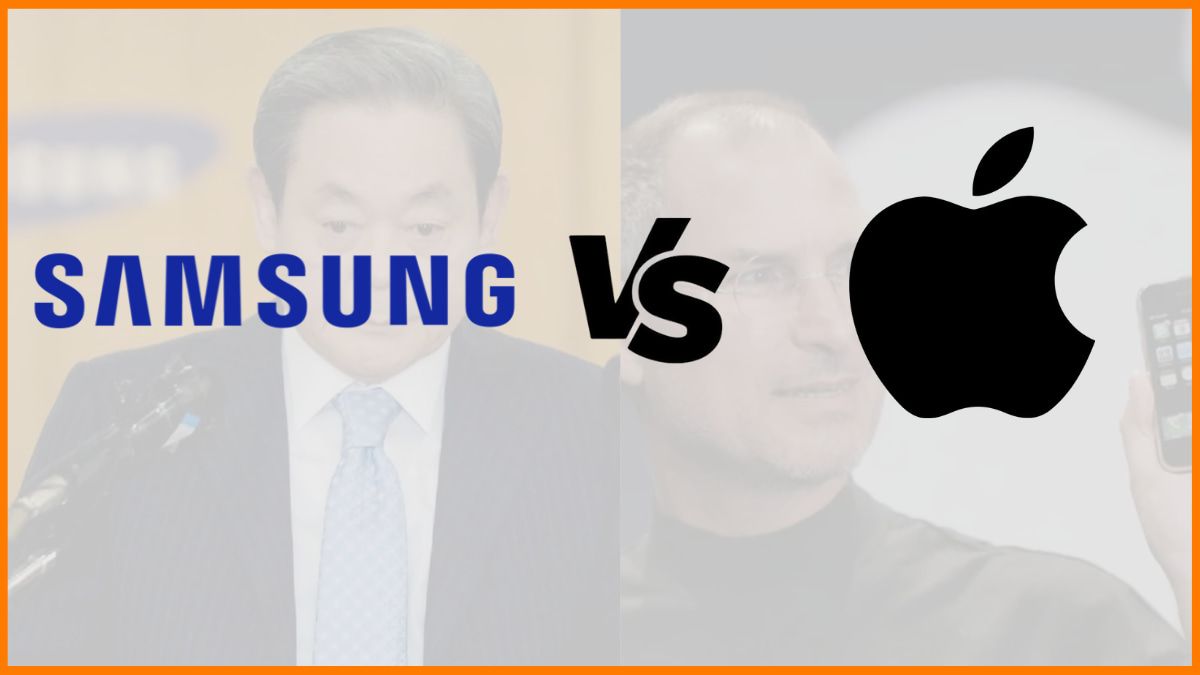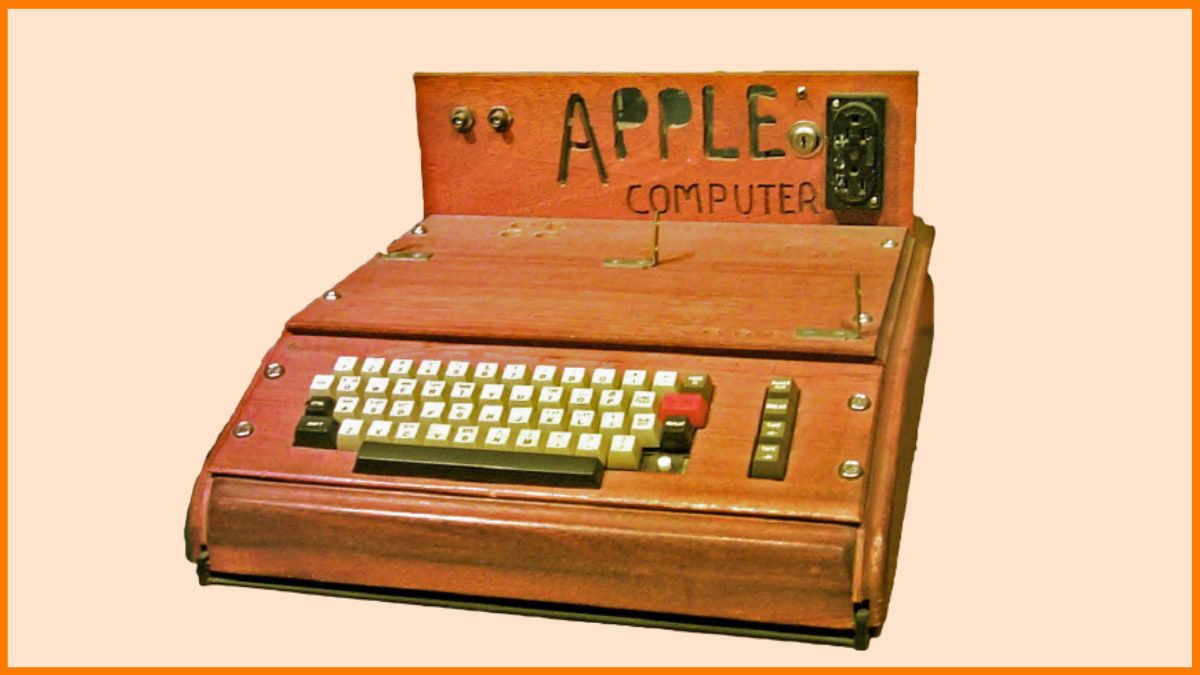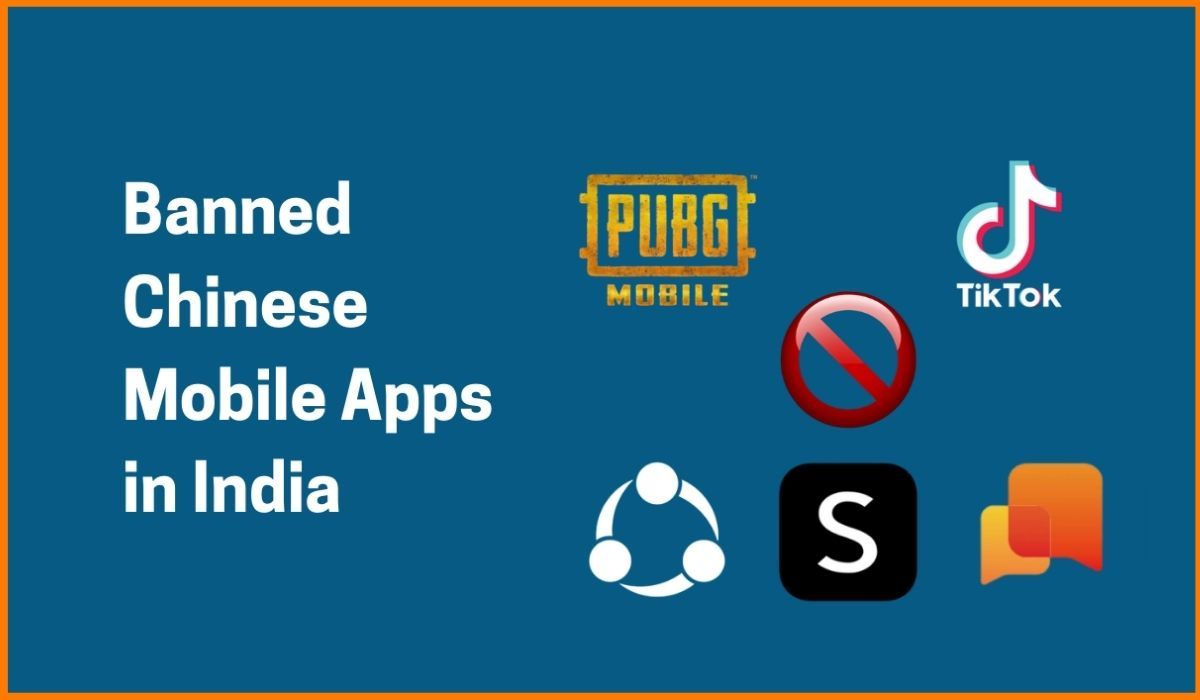With steady growth, the tech industry is growing at an impressive 5.3% rate. The industry occupied around 35% of the total market base. And the count of tech companies is increasing with a high amount. For instance, the highest count of tech companies is based in the United States, with a count of more than 500 thousand.
And it’s true that regardless of their origin industry, the means of technology is acquired by everyone, and so is every industry. Technology covers all sectors, including hardware, software, online services, tools, and cybersecurity solutions.
Speaking of the tech industry, we are here to make you familiar with the top tech companies in the world, with their market capital and total revenue. So, let’s get started with the article!
List of Top Tech Companies in the world
The tech industry comprises many companies, among which are some of the most valuable in the world. And here’s the list of those and the top tech companies worldwide:
- Apple
- Microsoft
- Google Alphabet
- META
- Tesla (TSLA)
- Amazon
- Samsung Electronics
- Tencent Holdings
- Alibaba Group
- Taiwan Semiconductor Manufacturing Co. Ltd. (TSMC)
- Dell Technologies
- Oracle Corporation
- Foxconn
- Huawei
- Adobe
1. Apple
| Company | Apple |
|---|---|
| Founded | 1976 |
| Market Cap | $2421 B (2022) |
| Revenue | $387.54 B (2022) |
| Top Products | Apple iPad, Apple Mac Book, Apple Watch, Apple iPhone Mobile |
| Website | www.apple.com |

With the highest market capitalization of USD 2421 billion, Apple has an enormous presence in the world’s tech market, making it a giant in the industry. Apple specializes in software, electronics, and online services, with an employee account of over 1,608,000.
Apple is an integral part of BIG FIVE, which includes Google, Amazon, Meta, Apple, and Microsoft. These five companies are the most valuable public corporations in the world based on their market capitalization.
This tech giant was founded in 1976 by Steve Jobs, Steve Wozniak, and Ronald Wayne. Since then, Apple has been on a progressive growth producing various kinds of tech devices, from computers to wearables.
Moreover, Apple is the largest technology company based on its revenue, USD 387.54 billion in 2022. And ranked the fourth largest personal computer vendor based on its unit sale in 2021. Its popular products are AirPods, iPhone, iPad, and Apple Watch.
2. Microsoft
| Company | Microsoft |
|---|---|
| Founded | 1975 |
| Market Cap | $1825 B (2022) |
| Revenue | $198.27 B (2022) |
| Top Products | Microsoft Windows, Microsoft Office Suite, Micrsoft Azure, Internet Explorer |
| Website | www.microsoft.com |

Being the most prominent tech giant in the world and the largest software company, Microsoft is one of the oldest tech companies mentioned in this list. It was founded in 1976 and released to the public in 1986. It is best known for its Windows operating system, Azure cloud services, LinkedIn social media platform, and Xbox gaming system.
Moreover, Microsoft is ranked first in the list of BIG FIVE tech giants. The company reported a 12.3% revenue growth in 2022, whose main credit goes to Microsoft’s Azure and other cloud services. Also, at the start of 2022, it announced its deal to acquire the video gaming publisher Activision Blizzard Inc. (ATVI).
3. Google Alphabet
| Company | Google Alphabet |
|---|---|
| Founded | 1998 |
| Market Cap | $1346 B (2022) |
| Revenue | $278.13 B (2022) |
| Top Products | Google Search, Google Maps, Google Assistant, Gmail, Android |
| Website | www.abc.xyz |

Next, with a whopping market capital of 1346 billion dollars, Alphabet Inc. is an American-based multinational company that originated from Google LLC and many other subsidiaries.
Google Inc. is considered a unanimous leader in the search engine sector across the world, whose market share is around 91.9%. Regarding the FIVE GIANTS, Google has always been a genuinely innovative and trustworthy tech giant, founded by Larry Page and Sergey Brin in 1998.
Google Alphabet always has a keen eye for investing in innovative projects such as life extension R&D company Calico, self-driving cars, the smart home project Nest, and many more.
4. META
| Company | Meta |
|---|---|
| Founded | 2004 |
| Market Cap | $545.44 B (2022) |
| Revenue | $117.929B (2021) |
| Top Products | Facebook, Meta Audience Network, Meta Business Tool |
| Website | www.about.meta.com |

When it comes to top tech companies across the world, META can never be off the table. The company is the parent company of the most powerful social media platforms such as Facebook, Instagram, and Whatsapp.
Mark Zuckerberg founded the company when he was still a student at Harvard University in 2004. META succeeded with an advanced graph, and as of today, the company has reached nearly 3 billion active users monthly.
In competing with Snapchat and Tiktok, META has introduced several innovative features that have made it a leader in online advertising.

5. Tesla (TSLA)
| Company | Tesla |
|---|---|
| Founded | 2003 |
| Market Cap | $656.57B (2022) |
| Revenue | $74.863B (2022) |
| Top Products | Tesla Electric Car, Tesla Model X, Tesla Model 3 |
| Website | www.tesla.com |

Tesla is a true leader in electric vehicle development and production. Even though the prices of vehicles offered by Tesla are too high, and it takes a lot of time to deliver them, consumers prefer them over everything else.
Tesla was founded by Elon Musk who is also the current CEO of the Tesla Company. The unique thing about Tesla is its business model, which does not use the traditional dealership model of selling vehicles.
6. Amazon
| Company | Amazon |
|---|---|
| Founded | 1994 |
| Market Cap | $1258 B (2022) |
| Revenue | $485.90 B (2022) |
| Top Products | Amazon.com, Alexa, Amazon Prime, Amazon Music, Amazon Pay |
| Website | www.amazon.com |

With a market capitalization of USD 1258 billion US dollars, Amazon is counted among the most valuable tech companies in the world founded by Jeff Bezos in 1994.
Initially, the company was limited to online marketing only, but with time, it started developing its technological devices and also offered cloud services to consumers. With such an innovative mindset, Amazon is ranked the 6th largest company by Forbes among the list of top 25 techs and IT companies.
7. Samsung Electronics
| Company | Samsung Electronics |
|---|---|
| Founded | 1969 |
| Market Cap | $281.39 B (2022) |
| Revenue | $250.21 B (2022) |
| Top Products | Samsung Galaxy Mobile Phones, Samsung Monitors, Samsung Camera |
| Website | www.samsung.com |

Samsung Electronics is the largest mobile phone manufacturing company and the biggest competitor to Apple Inc in the production of mobile phones.
The company is based in Seoul, South Korea. Samsung Electronics isn’t limited to producing electronic devices but also ships, turbines, aircraft engines, and life insurance. Its flagship brands are Galaxy S, Z, and note series. They contribute up to 40% of the company’s growth.
8. Tencent Holdings
| Company | Tencent Holdings |
|---|---|
| Founded | 1998 |
| Market Cap | $389.88 B (2022) |
| Revenue | $83.64 B (2022) |
| Top Products | WeChat, PUBG Mobile, QQ Riot Games, Tencent Weibo, Qzone |
| Website | www.tencent.com |

Tencent Holdings, a Chinese technology conglomerate company, is the first-ever Asian tech company that reaches the mark of $500 billion.
The company offers web portals, payment systems, e-commerce platforms, mobile games, and social networks. Along with this, it also owns Tencent Music and Tencent Games companies.
The most successful product of Tencent Holdings is WeChat which has over 1.2 billion monthly active users. The company also provides various marketing solutions and cloud services.
9. Alibaba Group
| Company | Alibaba Group |
|---|---|
| Founded | 1999 |
| Market Cap | $191.14B (2022) |
| Revenue | $134.567 B (2022) |
| Top Products | Alibaba.com, Aliwangwang, Alibaba Cloud, AliGenie |
| Website | www.alibabagroup.com |

Another massive Chinese multinational technology company is Alibaba Group. It specializes in retail, e-commerce, the internet, and technology. It offers various profitable services such as web portals, electronic payment services, shopping search engines, and cloud computing.
Alibaba Group was founded in 1999 and established in Hangzhou, Zhejiang. Regarding retailers and e-commerce companies, Alibaba Group is one of the largest groups of companies in the industry.
Moreover, the company is ranked fifth among the largest artificial intelligence companies in the world in 2020.
10. Taiwan Semiconductor Manufacturing Co. Ltd. (TSMC)
| Company | Taiwan Semiconductor Manufacturing Co. Ltd. (TSMC) |
|---|---|
| Founded | 1987 |
| Market Cap | $330.63 B (2022) |
| Revenue | $66.691 B (2022) |
| Top Products | Semiconductors Used in Mobile Devices, Internet of Things, Automotive Electronics |
| Website | www.tsmc.com |

Being the largest contract chipmaker in the world, Taiwan Semiconductor Manufacturing produces highly advanced and innovative semiconductors designed by Qualcomm Inc. (QCOM) and Advanced Micro Devices Inc. (AMD).
In recent years, Taiwan Semiconductor Manufacturing has reported a 43.5% growth in its revenue and a net worth of $7.9 billion. The company was founded in the year 1987 and ever since then; it has been leading the global semiconductor foundry, where it generates a 517% return for investors.

11. Dell Technologies
| Company | Dell Technologies |
|---|---|
| Founded | 1984 |
| Market Cap | $27.79 B (2022) |
| Revenue | $103.12 B (2022) |
| Top Products | Vostro, Dell EMR, Inspiron, PowerEdge |
| Website | www.dell.com |

Another super famous American tech company is Dell Technologies, which specializes in the market of personal computers. It offers a vast range of tech products, such as data storage devices, servers, SmartTV, network switches, computer accessories, cameras, and many more.
This tech company was founded in 1984 by Michael Dell. Since then, Dell Technologies has been known for its innovative chain supply management and direct sales e-commerce model.
12. Oracle Corporation
| Company | Oracle Corporation |
|---|---|
| Founded | 1977 |
| Market Cap | $202.40 B (2022) |
| Revenue | $44.15 B (2022) |
| Top Products | Oracle Database, Oracle ERP, MySQL, Oracle E-Business Suite |
| Website | www.oracle.com |

Oracle Corporation, a computer software company, was founded in 1977 in California, United States by Larry Ellison, Bob Miner, and Ed Oates with its corporate office headquartered in Austin, Texas.
The company has over 400,000 customers across the globe, such as Siemens Healthineers and FedEx. It provides multiple specific solutions for different types of industries.
Its solutions help manage the modernization of restaurants’ finances, connect HR/product management, secure network infrastructure, and, most importantly, enhance client satisfaction.
13. Foxconn
| Company | Foxconn |
|---|---|
| Founded | 1974 |
| Market Cap | $44.30 B (2022) |
| Revenue | $219.11 B (2022) |
| Top Products | iPad, iPod, Kindle, BlackBerry |
| Website | www.honhai.com |

Being one of the largest employers, with around 1.29 million employees, Foxconn is known as the biggest private sector employer in China. It is a Taiwanese electronics contract manufacturing company founded in 1974 by Terry Gou.
Foxconn is spread over to more than 20 countries with its subsidiary count reaching up to 200+ in total. It is also considered the world’s largest electronic manufacturer and a leading science and technology solution provider.
Its top products in the market are iPhone, Kindle, iPad, Blackberry, Redmi phones, PlayStation, and Nintendo. Foxconn ranked 22nd in the 2021 Fortune Global 500.
14. Huawei
| Company | Huawei |
|---|---|
| Founded | 1987 |
| Market Cap | $71.2 B (2022) |
| Revenue | $99.9 B (2021) |
| Top Products | Huawei MateBook, Huawei Watch, Huawei Mobiles |
| Website | www.huawei.com |

Another China-based tech company is Huawei Technologies, a consumer electronics manufacturer. Its designs create and sell telecommunication tools to the top telecom companies worldwide, including British Telecom, Bell Canada, and Vodafone.
The company was started as a reselling private branch exchange company, founded in 1987 by Ren Zhejiang. Today, Huawei is a telecom behemoth that develops numerous innovative tech gadgets.
15. Adobe
| Company | Adobe |
|---|---|
| Founded | 1982 |
| Market Cap | $142.43 B (2022) |
| Revenue | $17.19 B (2022) |
| Top Products | Adobe Photoshop, Adobe Acrobat, Adobe PDF, Dreamweaver, Adobe Lightroom |
| Website | www.adobe.com |

Adobe was founded in 1982 as an American-based software company that provides practical solutions for marketing and document management. Its top products in the market are Adobe Photoshop, Adobe Acrobat, and Adobe Creative Cloud.
Adobe was founded by John Warnock and Charles Geschke in 1982 with its headquarters being placed in San Jose, California (United States). Adobe Inc. also expanded its services in digital marketing software and was considered one of the top global leaders in Customer Experience Management (CXM) in 2021.
The top three services provided by Adobe are Creative Cloud, Experienced Cloud, and Document Cloud.
Conclusion
In conclusion, we can say that the tech industry is increasing and covers some of the most valuable companies in the world. However, it’s essential to know that before investing in any company, you need to do thorough research and, after that, focus on buying an ETF.
As the industry contains a vast number of tech companies, there are many options for you to invest and earn a profit. The above list includes the top 15 tech companies in the world with some of the
FAQs
Which are the top 5 IT companies in the world?
The top 5 IT companies in the world are Microsoft Corporation, IBM, Accenture, Oracle, and TCS.
Which is the oldest tech company?
IBM is considered the oldest tech company in the world. Basically, IBM is counted to be 108 years old company.
What are the top 3 online businesses?
The top 3 online businesses are selling digital marketing services, freelancing, and coaching and consulting.
Who is the market leader in technology?
Apple is considered the market leader in technology with a marketing capital of about $2.448 T.









































